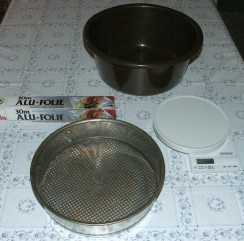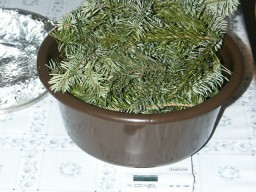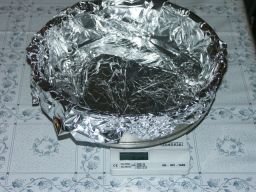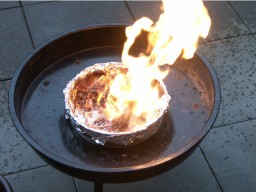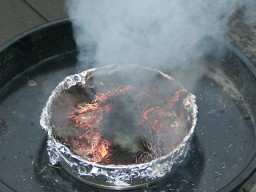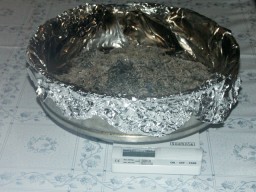 > ACCENT en > UQ 1 Nov Dec 06 Particles in air > A: Combustion of plants
> ACCENT en > UQ 1 Nov Dec 06 Particles in air > A: Combustion of plants
|
Combustion ExperimentsWe burn fir- twigs In summer we often hear about forest fires in Spain, Portugal, other states in the Mediterranean, but also in other relatively dry regions in the world, for example in the West of the United States. During the burning process solid matter is transformed and transported to the air. We observe this in a fire experiment. |
|
Material: 150 g dry plant material (here fir-twigs) |
|
|
|
Procedure We cut about 150 g dry plant material into small parts and measure the exact dry weight on a kitchen balance, for example in a large plastic bowl We determine the empty weight of the burning vessel. We put the twigs into the burning vessel (baking tin) and light them, if necessary with the help of some ethanol. They should be dry enough in order to burn down nearly completely. After the end of the burning process we determine the weight of the formed ash in the burning vessel: weight ash = burning vessel with ash – burning vessel empty.
|
|
|
|
Results from a demonstration experiment:
From 140 g of plant material remain only 7 g ash. |
|
|
|
Interpretation Question 1: Why there is much less mass from the ash than we had before from the plants?
|
|
Part 2 – Collection of particles during the combustion Material: Dry plant material Procedure The funnel is fixed with the tape on the intake tube of the vacuum cleaner in a way that the run out of the funnel is directed into the pipe. With the help of the tape the filter paper is fixed in the funnel so that the paper covers the hole of the funnel run out. While the plant material is burning, the funnel is positioned close to the plume from the fire. (Attention, not too close to or over the burning zone.) The emitted air including particles is sucked trough the filter paper by the vacuum cleaner. After 5 mins of sampling the changes on the filter paper are discussed. If a microscope is available the clean filter and the filter after sampling can be compared under the microscope. Result: The combustion produces solid particles which are suspended in the air. Interpretation: Question: Which meaning does this experiment have for the reality?
|

